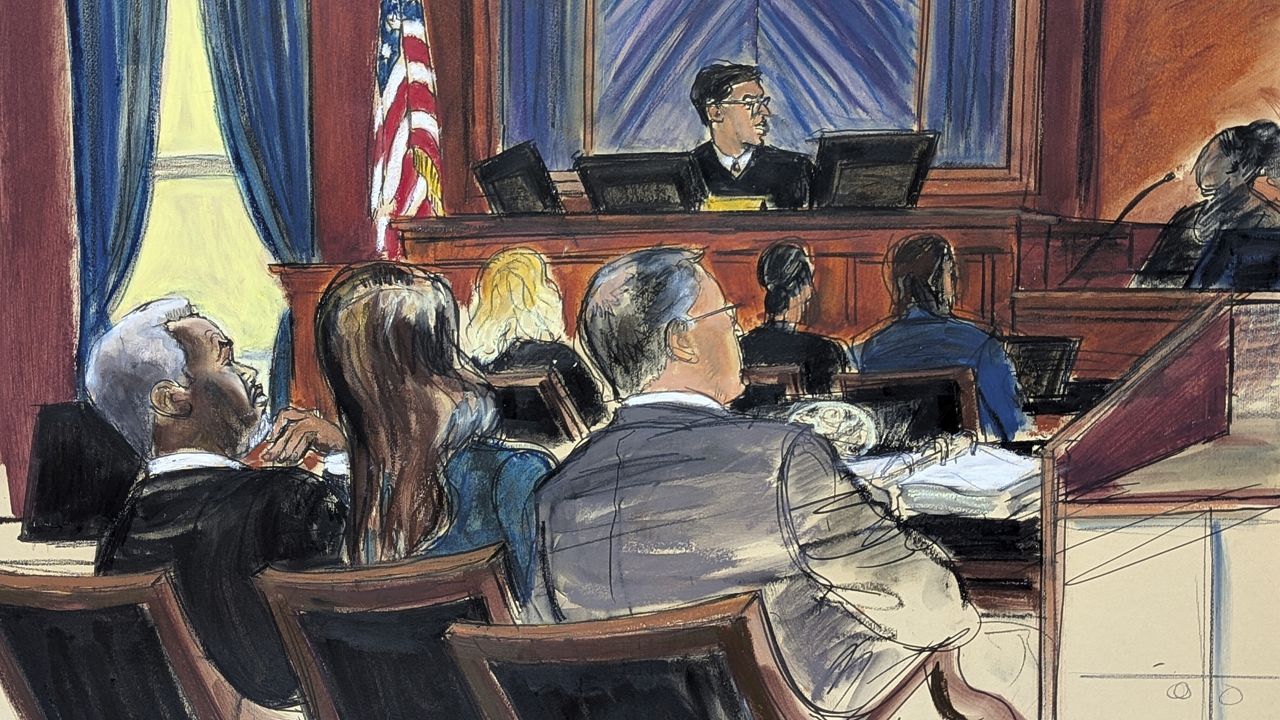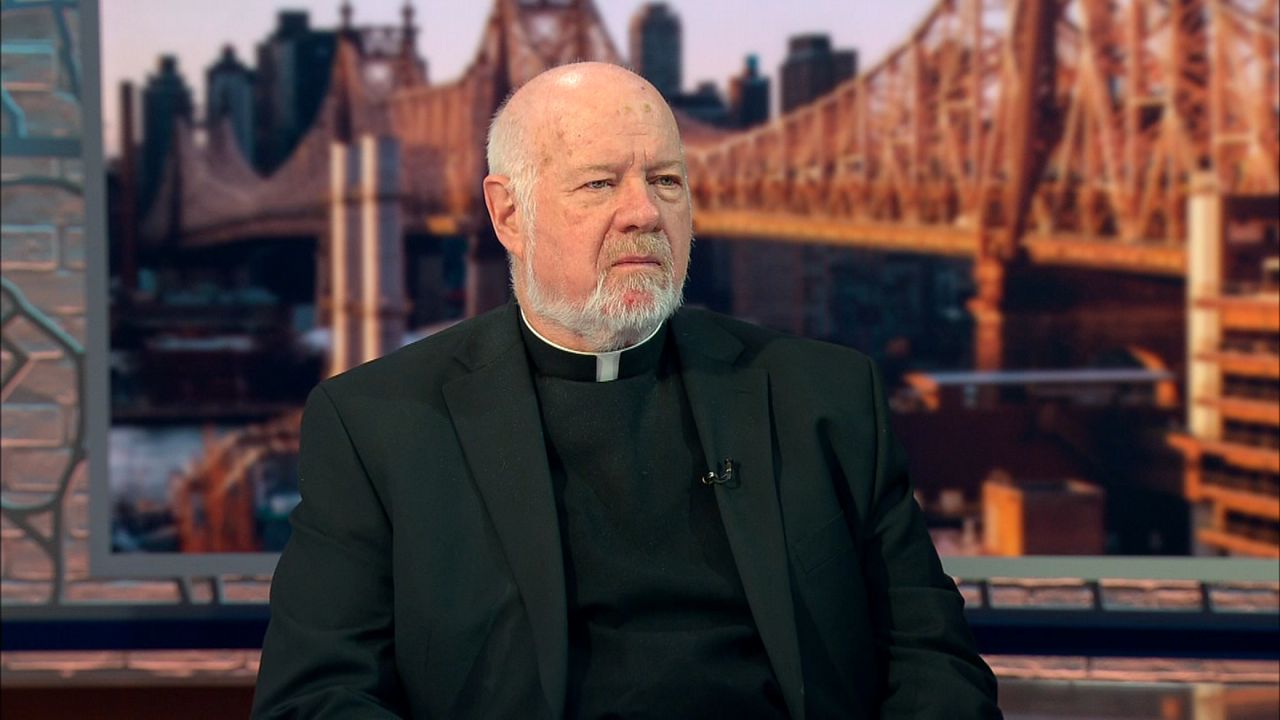A year ago today, the historic rainfall and flooding of Hurricane Ida brought floodwaters to the top of the basement stairs in nearly every house along a quiet alleyway in East Elmhurst, Queens. The storm caused 13 deaths across the city; in a house along the alleyway, one resident nearly drowned.
That alley became a national center of attention a week later, when President Joe Biden visited and spoke to residents about the destruction caused by the storm.
In the wake of Biden’s visit, the city’s Department of Environmental Protection repaired the alley’s drainage line in a matter of months, a relatively lightning-fast effort that brought hope to the families in the nearby row houses — and basements that stayed flood-free for months.
Yet on July 18, intense rainfall flooded streets across the city — and led to flooding and sewage backups in the homes along the alleyway.
A once-in-a-lifetime overhaul by the city had not ended the neighborhood’s woes.
“We know DEP did the best they can. And we’re having these same problems again,” said Arlene Diangkinay, a resident of the block for 26 years. “We’re back to, ‘We can't go on vacation, we can't leave the house.’ We’re back to square one.”
Since Ida, the city has made only modest progress in jumpstarting new efforts to upgrade and rebuild city drainage infrastructure for extreme rainfall events, according to elected officials, policy experts and residents.
“We can lose loved ones — that’s the bottom line — because of how behind we are,” State Sen. Jessica Ramos, who represents East Elmhurst, said in an interview.
In an announcement Thursday marking the year anniversary of Hurricane Ida, Mayor Eric Adams outlined the city’s latest efforts to make the city more resilient, announcing the completion of thousands of rain gardens, the start of the design phase to install dozens of miles of pavement that allows water to seep directly through it, and providing some details for how the city will spend $188 million in federal disaster relief grants.
"Over the past nine months of this administration, we have prioritized climate action at every level of government," Adams said, speaking in front of a rain garden in South Ozone Park, Queens. "We're adapting in real time to the realities of climate change."
Yet even as many in the city clamor for expanded action on climate, a number of the mayor’s announcements mark progress on efforts already in the pipeline for years.
The new rain gardens bring the city’s total to 11,000 — the same number officials have been citing for over a year as the number of rain gardens either completed or under construction. Adams said the city will also begin work on 1,000 more rain gardens this calendar year.
Adams also announced that the city is starting to design a planned resurrection of Tibbetts Brook, a buried waterway in the Bronx. He also highlighted ongoing efforts to create a network of real-time flood monitors and redesign features of several NYCHA developments to hold hundreds of thousands of gallons of rainwater during intense storms.
The city plans to spend the federal grant money on improving resiliency for NYCHA homes and increasing awareness around flood risk, Adams said.
The DEP has also hired as a consultant Eric Sanderson, a conservation ecologist known for research that has identified the locations of historic streams and tributaries across the city that were filled in by developers, Rohit Aggarwala, the city's chief climate officer and the commissioner of the DEP, said at the news conference. Sanderson will help the agency identify potential locations for unearthing old streams to mitigate flooding, as well as for locations to create natural "blue belt" wetland areas that can capture massive amounts of stormwater.
"We're making progress now, and you're going to see a lot more of it in the coming months and years," Aggarwala said. "It will not be easy, or immediate."
The announcement represents the Adams’ administration latest update on its resiliency efforts, coming after the release earlier this summer of a map that modeled moderate rainwater flooding risk across the city. The map determined who was eligible for a new DEP program that distributes free, inflatable dams to some residences to prevent flooding.
Some policy experts, advocates, city officials and residents, however, worry that the city is not moving quickly enough to expand infrastructure that would prevent street flooding.
David Burney, a former commissioner of the city’s Department of Design and Construction, and a current commissioner for the City Planning Commission, said the city should be increasing the pace at which it installs rain gardens, other green infrastructure and permeable pavement that allows water to seep directly into the ground.
“I don't know that there's a simple way to get results faster,” Burney said. “To the extent that we see increasingly severe storms, it could get worse before it gets better.”
Part of the issue is that it is a period of “mission transition” for DEP, said Rob Freudenberg, vice president of energy and environment for the Regional Plan Association. Whereas for over a decade the agency’s main goal has been to prevent sewage from entering city waterways, it is now tasked with essentially flood-proofing the five boroughs.
“It’s taking an organization that’s already committed to doing something really important, and asking them to add another thing to the to-do list, and that’s gonna take time,” Freudenberg said.
Aggarwala said at the news conference that the DEP is preparing a comprehensive plan for making the city’s infrastructure more resilient as a whole, which will be released next April.
"Our planning work does not mean we are not doing real work right now," Aggarwala said.
Until then, different neighborhoods are getting creative about how to force the city to address long standing flood issues.
Councilwoman Nantasha Williams, who represents parts of southeast Queens, said she is exploring ways to get the city to move faster on an ongoing DEP effort to bring storm sewers to several neighborhoods in the area.
At the council oversight hearing last month, Williams asked Aggarwala whether the city can also begin to address flooding caused by the area’s high water table. Aggarwala said the agency was beginning to study the issue.
“How long does it take to conduct a study?” Williams said in an interview. “How many studies do you need to find a solution and put it into action?”
The alleyway in Queens got a nearly immediate fix from the city after residents and local elected officials, including Ramos, secured a public health hazard from the health department. Ramos said she also believes that Biden’s presence pushed city leaders to make the declaration.
Just south of that alley, Yurly Olivares is collecting signatures for a petition to secure a similar repair for her block, which also flooded during Ida and continues to receive regular floods, she said.
“We’re traumatized now,” Olivares said. “We have a regular thunderstorm, and we’re just watching our windows. Are we OK back there? Are we flooding again?”









